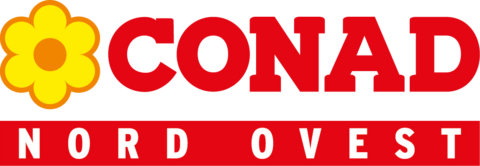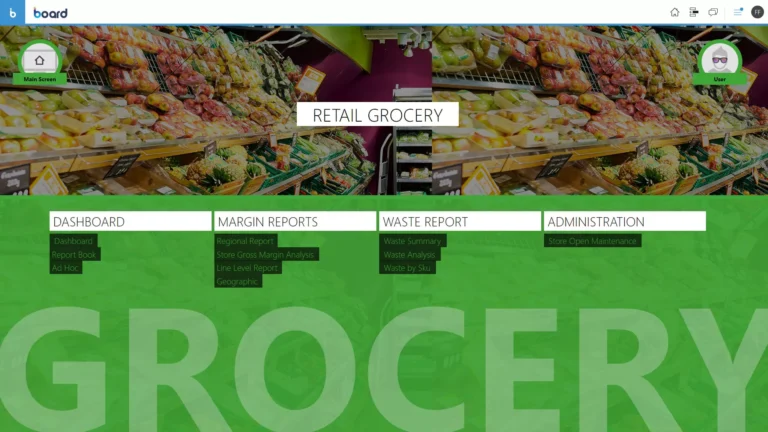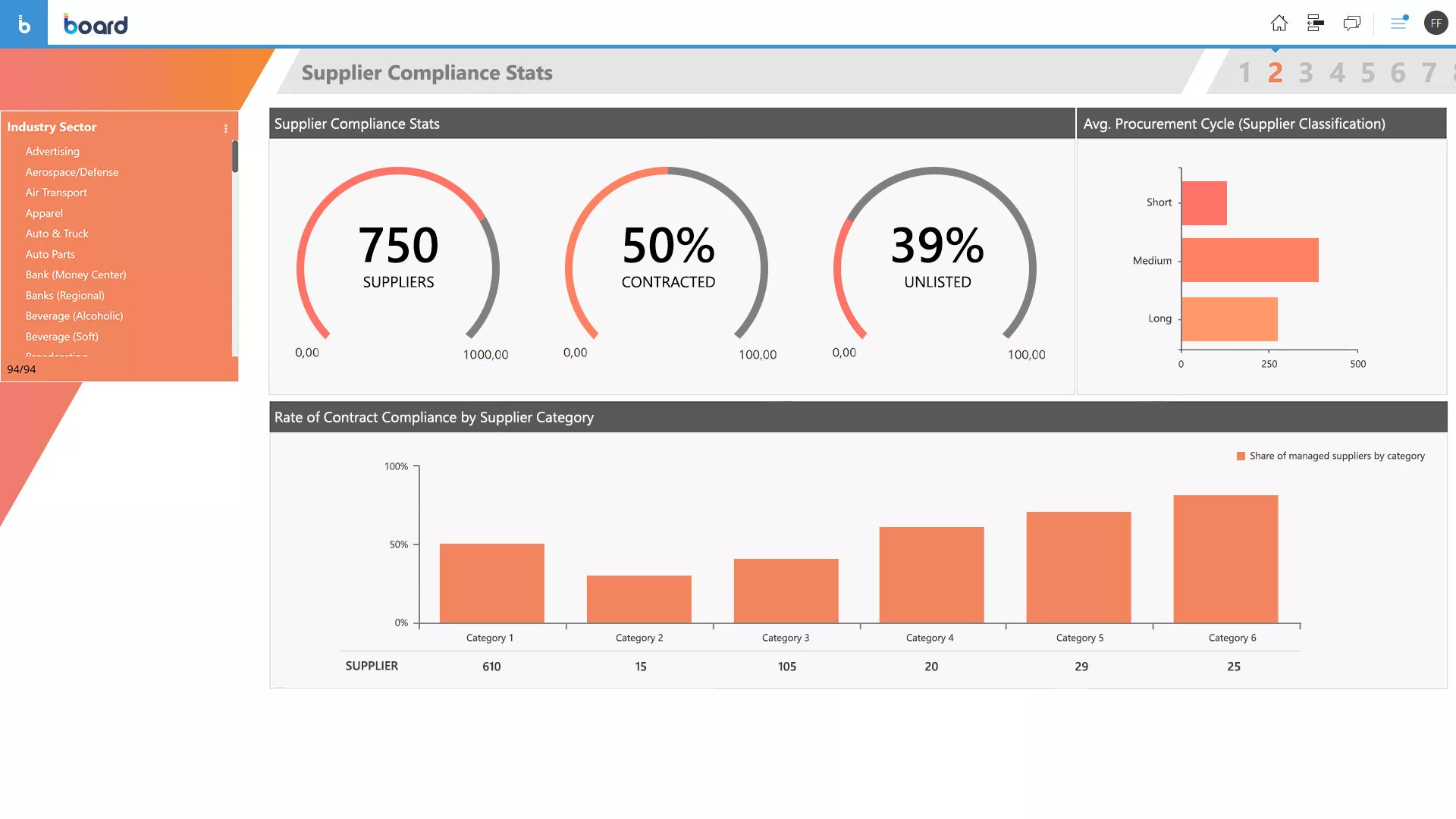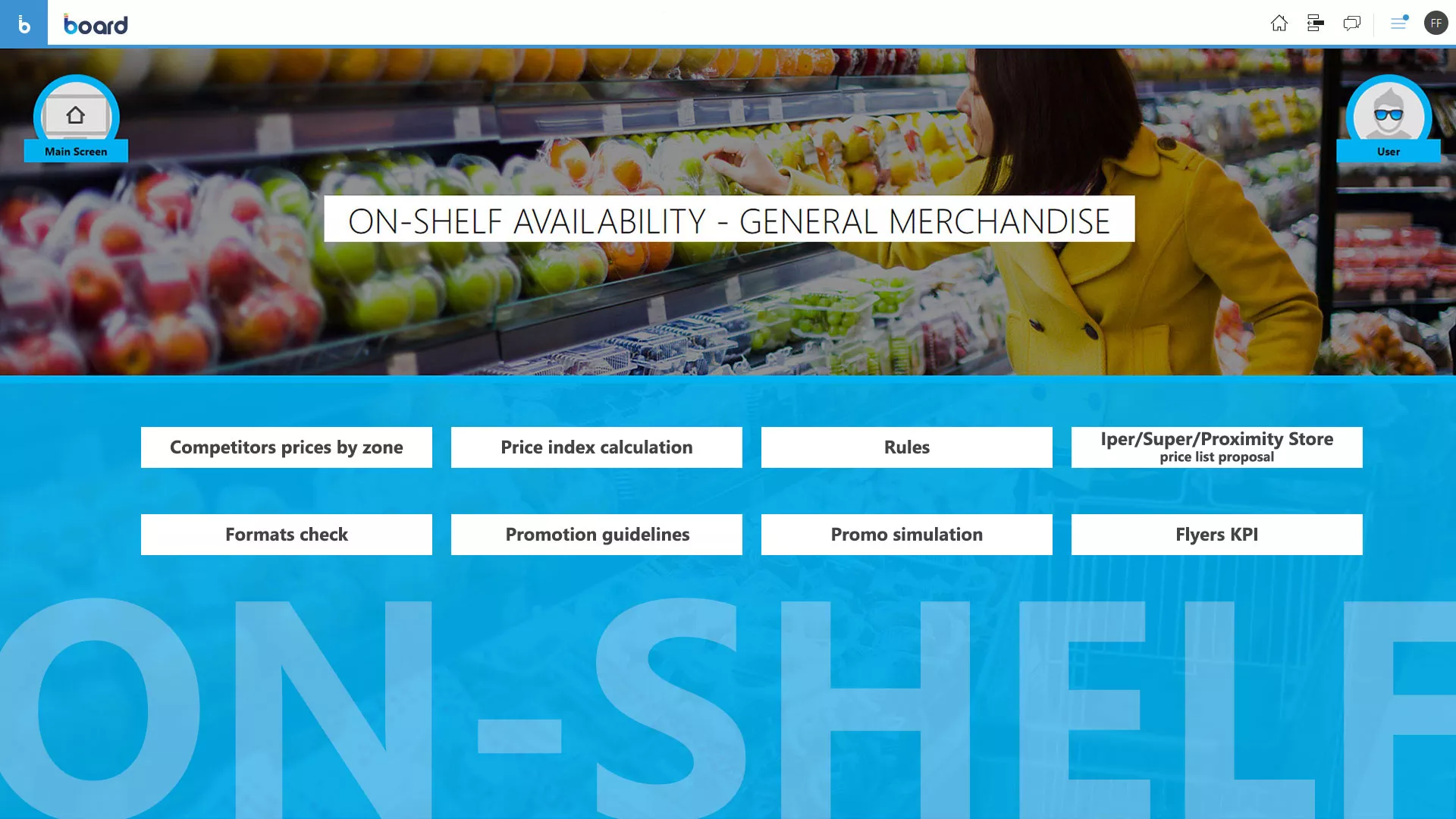
Board enabled us to integrate all the information from different sources into a single environment, guaranteeing us the immediate multidimensional analysis of information and making reporting simple and flexible.
This website will offer limited functionality in this browser. We only support the recent versions of major browsers like Chrome, Firefox, Safari, and Edge.
Turn consumer spending patterns into smarter merchandise, assortment, and replenishment plans—aligning product strategy to customers’ needs. Increase profitability and accelerate digital transformation with the Board Enterprise Planning Platform.


The battle for consumers’ grocery spend is more intense than ever, with new store concepts, pricing strategies, delivery formats, and market volatility putting retailers under pressure to deliver increased value with decreased costs. Board empowers grocers to turn consumer spending patterns into profitable plans, aligning product strategy to customers’ needs.
Achieve full transparency across the supply chain with a centralized hub for data analysis.

Unifying financial and operational retail data, Board creates a single point of truth and provides complete visibility of performance through interactive dashboards and reports.
Perform detailed analysis on data at every level of the organization, from aggregated product categories to individual SKUs.
A user-friendly interface enables users to analyze data in their own way to quickly find the answers they need.
Planning and analysis capabilities in a single platform enables you to use historical data for future planning activities.
Link high-level strategies to financial and operational goals for individual stores.

Unify business-wide data, from supplier to shelf, to create a single point of truth for analysis, planning, and reporting.
Create and review business initiatives such as the launch of new brands or product lines.
Model scenarios to assess their impact on the business’ bottom line before choosing the option which is likely to deliver the best outcome.
Set and monitor budgets for the time period of your choice, in line with projected performance
Produce well-informed financial plans which take into account the impact of every area of the business.

Distribute targets and financial goals at brand/region/channel level to produce a plan which works for all departments.
The unification of data from across the business creates full visibility of the relationship between activities and related costs.
Automate time-consuming processes by automatically collating and consolidating financial data for analysis and reporting purposes.
Effectively manage a mix of multiple product categories to capitalize on high performers and change the strategy for less successful ranges.

Define product categories as mini business units, assigning them goals to help drive overall performance (revenue/traffic/margin generator, etc.).
Create category scorecards to easily monitor and analyze strategic, operational, and financial success.
Perform simulations and comparisons between different versions of the strategy.
Find the optimal pricing and promotional strategies to help the achievement of strategic and financial goals.

Automatically analyze competitors’ prices and define “Price Indexes” for every category.
Set the rules of pricing consistency for different packing sizes and formats of goods, considering the goals of every store format.
Analyze historical promotions and define future budgets and targets for promotions at category or supplier level.
Effectively define promotional periods for each product in a collaborative approach with suppliers.
Analyze the historical impact of past promotions and automatically uplift the statistical forecast baseline.
Effectively manage shelf availability and service level for non-food categories.

Create effective reports on shelf availability and develop service level indexes, enabling the clustering of different product groups to calibrate replenishment policies.
Assess future demand levels based on statistical forecasting capabilities.
Determine replenishment quantities and slots based on the target level of shelf availability and supply chain lead times.

Board enabled us to integrate all the information from different sources into a single environment, guaranteeing us the immediate multidimensional analysis of information and making reporting simple and flexible.